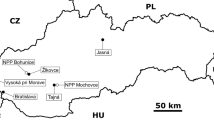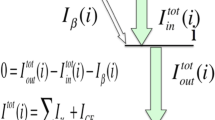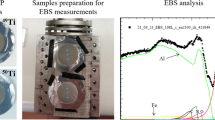Abstract
The induced reactions by light ions such as protons, deuterons, 3He and α-particles on 209Bi, as the heaviest stable isotope in the periodic table, are important for the production of heavy radioactive isotopes. These radioactive isotopes are mainly α-emitters and could be used in cancer therapy. In this study, 209Bi(p,2n)208Po, 209Bi(p,3n)207Po, 209Bi(p,4n)206Po and 209Bi(p,5n)205Po reactions were studied by collecting the previously measured excitation functions, holding an inter-comparison and performing code calculations using the TALYS 1.6 code. As a result of the inter-comparison, mathematical fit for each reaction was given. α-induced reactions on 209Bi target leading to the formation of 210,211At and 210Po radioisotope were also studied through this work. The production of 211At without considerable isotopic 210At impurities was discussed. The previously measured excitation functions were fitted as before, and TALYS 1.6 code calculation was performed. The code calculations were compared with the mathematical fitted excitation functions.







Similar content being viewed by others
References
S.K. Imam, Advancements in cancer therapy with alpha-emitters: a review. Int. Radiat. Oncol. Phys. 51, 271–278 (2001)
A.J. Koning, S. Hilaire, S. Goriely, TALYS-1.6: A Nuclear Reaction Program. User Manual, Netherlands. http://www.talys.edy/download-talys. Accessed Dec 2015
TableCurve 2D,Version 4.06, Copyright 1989–1996, AISN Software
https://www.nndc.bnl.gov/nudat2/. Accessed 7 Nov 2018
C.G. Andre, J.R. Huizenga, J.F. Mechi, W.J. Ramler, E.G. Rauh, S.R. Rocklin, Proton cross sections of Bi-209. Phys. Rev. 101, 645 (1956)
P.J. Daly, P.F.D. Sahw, Radiative proton capture cross-sections in heavy nuclei. Nucl. Phys. 56, 322 (1964)
K. Miyano, H. Nakahara, The cross section and the recoil range study of the 209Bi(p,n) and (p,2n) reactions. J. Phys. Soc. Jpn. 35(4), 953 (1973)
R.E. Bell, H.M. Skarsgard, Cross sections of (p,xn) reactions in the isotopes of lead and bismuth. Can. J. Phys. 34, 745 (1956)
C. Birattari, E. Gadioli, A.M. Grassi, G. Strini, G. Tagliaferri, L. Zetta, (P,XN) Reactions induced in 169Tm, 181Ta and 209Bi with 20 to 45 MeV protons. Nucl. Phys. Sect. A 166, 605 (1971)
Z. Bao, J. Chen, J. Meng, S. Huang, The measurement of the ratio gamma-F/gamma-n and the fission barrier height for p+209Bi. Chin. J. Nucl. Phys. (Beijing) 12(1), 55 (1990)
J. Kuhnhenn, U. Herpers, W. Glasser, R. Michel, P. W. Kubik, M. Suter, Thin target cross sections for proton-induced production of radionuclides from lead and bismuth over the proton energy range from 9 to 71 MeV. Radiochim. Acta 89(11–12), 697–702 (2001)
L. Mochtari Oranj, N.S. Jung, M. Bakhtiari, A. Lee, H.S. Lee, Cross section of proton-induced reactions on bismuth and lead up to 100 MeV. Phys. Rev. C95, 044609 (2017)
L. Milazzo-Colli, G.M. Braga-Marcazzan, M. Milazzo, Further measurements of the probability of alpha cluster pre-formation by means of (p,alpha) reactions in heavy elements. Nuovo Cimento A 30, 632 (1975)
E.L. Kelly, E. Segre, Some excitation functions of bismuth. Phys. Rev. 75, 999 (1949)
W.J. Ramler, J. Wing, D.J. Henderson, J.R. Huizenga, Excitation functions of bismuth and lead. Phys. Rev. 114, 154 (1959)
K.J. Hofstetter, J.D. Stickler, Comparison of 3He-, 4He-, and 12C-induced nuclear reactions in heavy-mass targets at medium excitation energies. Experimental cross sections. Phys. Rev. Part C Nucl. Phys. 9, 1064 (1974)
R.M. Lambrecht, S. Mirzadeh, Cyclotron isotopes and radiopharmaceuticals astatine-211. Appl. Radiat. Isot. 36(6), 443 (1985)
A. Hermanne, F. Tarkanyi, S. Takacs, Z. Szucs, Y.N. Shubin, A.I. Dityuk, Experimental study of the cross sections of alpha-particle induced reactions on Bi-209. Appl. Radiat. Isot. 63, 1 (2005)
L. MacFadden, G.R. Satchler, Nucl. Phys. 84, 177 (1960)
P. Demetrion, C. Grama, S. Goriely, Nucl. Phys. A707, 253 (2002)
A.J. Koning, D. Rochman, Modern nuclear data evaluation with the TALYS code system. Nucl. Data Sheets 113, 2841–2934 (2012)
I.A. Rizvi, M.K. Bhardwaj, M. Afzal Ansari, A.K. Chaubey. Non-equilibrium reaction mechanism in alpha-particle induced excitation function for 209Bi up to 60 MeV, Appl. Radiat. Isot. 41, 215 (1990)
N.L. Singh, S. Mukherjee, D.R.S. Somayajulu, Non-equilibrium analysis of (a, xn) reactions on heavy nuclei. Nuovo Cimento A 107, 1635 (1994). (Italy)
H.B. Patel, D.J. Shah, N.L. Singh, Study of (α,xn) Reactions on 169Tm, 181Ta and 209Bi up to 70 MeV. Nuovo Cimento A 112, 1439 (1999)
Author information
Authors and Affiliations
Corresponding author
Rights and permissions
About this article
Cite this article
Azzam, A., Alharby, A.A. Comparative study and TALYS 1.6 code calculations for the excitation functions of P and α-induced reactions on Bi target with special attention to the medical radioisotope 211At. Eur. Phys. J. Plus 135, 192 (2020). https://doi.org/10.1140/epjp/s13360-020-00223-z
Received:
Accepted:
Published:
DOI: https://doi.org/10.1140/epjp/s13360-020-00223-z




